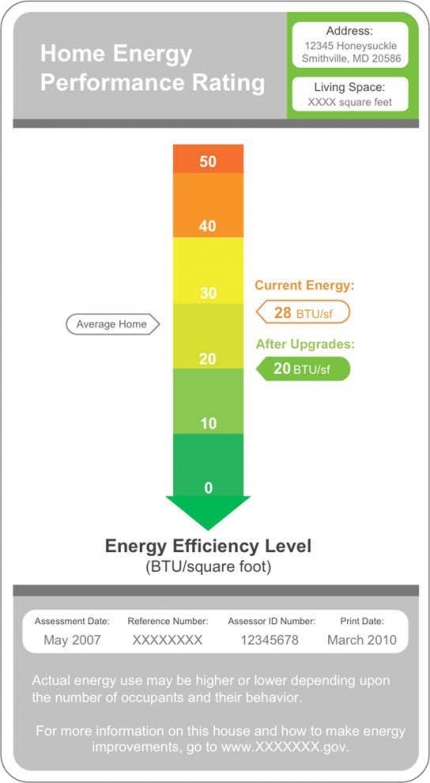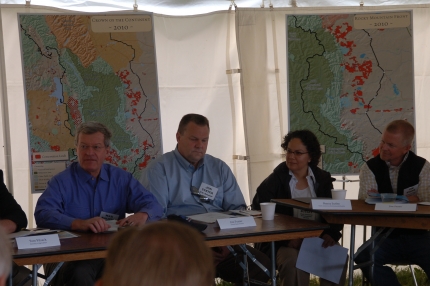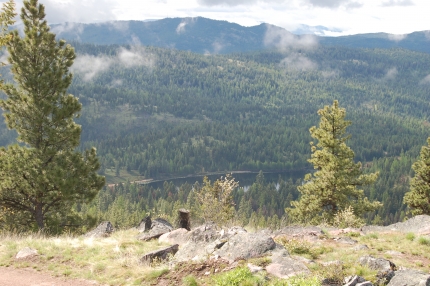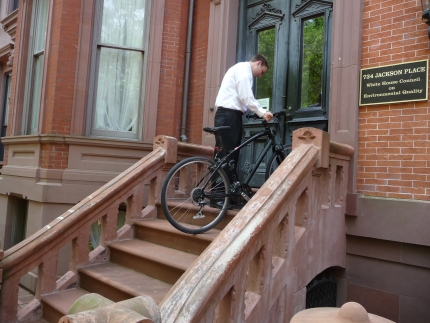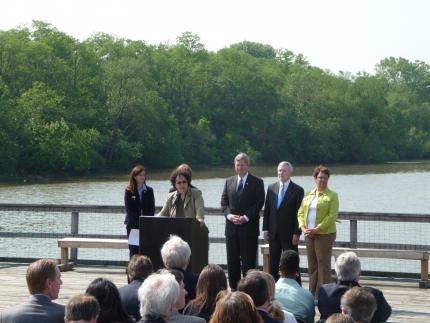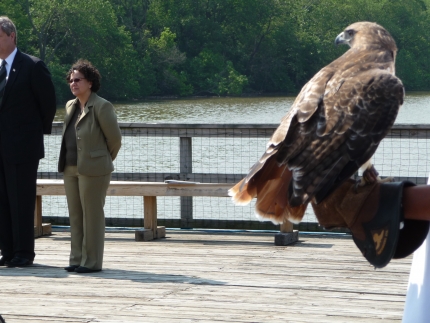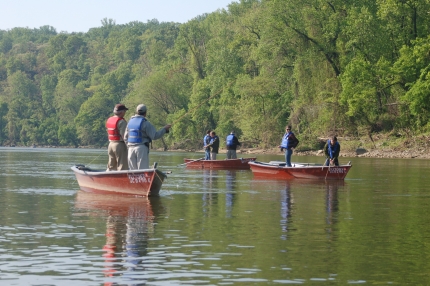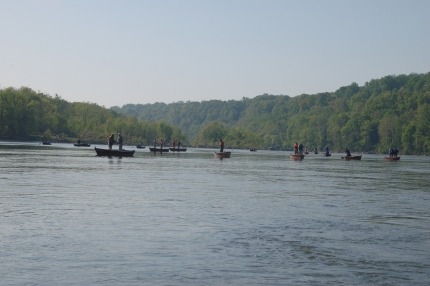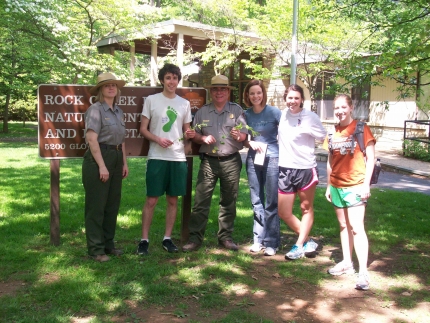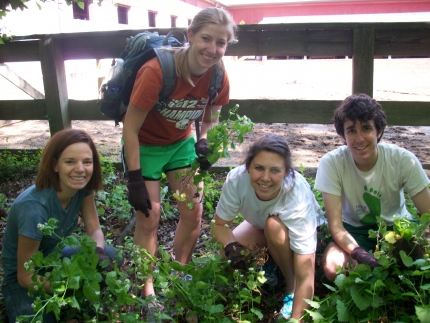Council on Environmental Quality Blog
Rating Home Energy Performance
Posted by on June 9, 2010 at 9:15 PM EDTHome energy retrofits are good investments that save families money, but consumers often do not have the straightforward information they need to decide whether to retrofit their homes and which investments make the most sense. However, exciting and important work is underway at the Department of Energy (DOE) to give consumers access to additional information about their home’s energy use and associated cost. This week, the Department issued a Request for Information from the public to help inform its work on developing a National Energy Rating Program for existing homes. This Rating Program will offer easy-to-understand and reliable information about the energy performance of an existing home that will help consumers to identify cost-effective energy efficiency improvements.
The Recovery Through Retrofit report to the Vice President in October, 2009 recommended the development of a consistent way of measuring a home’s energy performance and a clear method for conveying information to consumers. The report noted that providing clear, consistent information is critical to building the foundation for a self-sustaining home energy retrofit market that will save consumers money, reduce greenhouse gas emissions, and create high-quality, clean energy jobs.Since October, a team of Federal Agencies and Departments, led by DOE, has been working hard to refine methods for measuring energy performance and ways to communicate this information effectively to consumers. This Request for Information lays out the guiding principles that DOE will use to develop each part of the Rating Program. It outlines the pros and cons of different options for providing information to consumers and the initial strategy that DOE is considering.
If you would like to help figure out what type of National Energy Rating Program for existing homes is right for America, please submit comments to DOE by any of the following methods:
- Federal eRulemaking Portal: http://www.regulations.gov. Follow the instructions for submitting comments.
- E-mail: buildingratingRFI@EE.DOE.GOV. Include “RFI: National Energy Rating Program for Homes” in the subject line of the message.
- Mail: U.S. Department of Energy, Office of Energy Efficiency and Renewable Energy (EE-1), 1000 Independence Avenue, SW , Washington, DC 20585. Attn: National Energy Rating Program for Homes, Jessica Balsam
Comments must be received by no later than July 10, 2010.
Nancy Sutley is the Chair of the White House Council on Environmental Quality
Learn more about Energy and EnvironmentConservation in the Crown of the Continent
Posted by on June 4, 2010 at 6:49 PM EDTThis week, as part of the America's Great Outdoors Initiative, I had the opportunity to travel to Missoula, Montana to see and hear about some of the locally led conservation successes in the spectacular "Crown of the Continent." We also held the first of a series of listening sessions to hear about on-the-ground conservation efforts, and to find out how we can help them grow and succeed.
The President launched the America's Great Outdoors Initiative in April of this year to promote and support innovative, community-based efforts to conserve outdoor spaces and to explore ways to reconnect people to them. Many of these creative strategies are being successfully employed around Montana. Amid the grandeur of Montana's rich natural landscapes and working lands, it was easy to remember why this initiative is so important.
The breadth and depth of the ideas and information we heard in Montana underscore why modern-day land conservation has to continue to be driven from each community. Nobody knows which places are most important to American communities better than the people who live and work in them. It was wonderful to be on the ground in Big Sky Country to learn from the community about new opportunities to work together on a modern approach to conservation that begins at the ground level, and to reinvigorate the national conversation about our great outdoors.
Nancy Sutley is the Chair of the White House Council on Environmental Quality
Learn more about Energy and EnvironmentNational Bike to Work Day
Posted by on May 21, 2010 at 6:36 PM EDTAny day when I can take my bike to and from work is a good day. For years I’ve tried to get up just a bit earlier, walk past my car keys, pick up my helmet, and hit the bike trail through the park on my way to work. I find that it wakes me up and connects me to my surroundings, as well as lessens my environmental footprint. In honor of National Ride Your Bike to Work Day, getting on my bike this morning and riding to work seemed especially important.
As an increasing number of cities and businesses are becoming more bike friendly, riding to work is a possibility for millions of people like me who want to leave their car at home and take a green approach to their commute to the office. As President Obama has reminded us, the federal government has a responsibility to lead by example, especially when it comes to making improvements in environmental, energy and economic performance.
It is also particularly gratifying that this day coincides with the President’s announcement in the Rose Garden this morning of new regulatory steps to increase fuel efficiency and lower greenhouse gas emissions for the first time for trucks, as well as begin work to extend and improve the efficiency of cars for another decade. These are fundamental and important steps that government and industry can take to reduce our dependence on fossil fuel and minimize our impact on the environment.
But the little choices we make in our homes, communities, schools and businesses can add up to make a big difference in our own health and the health of our planet. Participating in National Ride Your Bike to Work Day is just one example of how we can do our part to ease congestion on roads, reduce greenhouse gas emissions and other pollutants, and become less dependent on oil.
Gary Guzy is the Deputy Director and General Counsel at the White House Council on Environmental QualityRestoring the Chesapeake Bay
Posted by on May 13, 2010 at 7:33 PM EDTNot far from its famous monuments and museums, Washington, D.C. has wonderful green space and natural areas. On Tuesday, I had the opportunity to see one of them up close, the Anacostia River. The Anacostia is a great example of a natural place that is facing serious environmental challenges. While there, I joined several other senior Administration officials to announce a new Federal strategy for protecting and restoring the Chesapeake Bay.
The President called for this strategy a year ago when he signed an Executive Order officially declaring what we have long known: that the Chesapeake Bay is a national treasure, and that we must restore and protect it for the people of the region, and for the Nation as a whole.
The range of agency officials at the announcement – including USDA Secretary Tom Vilsack, EPA Administrator Lisa Jackson, Secretary of the Navy Ray Mabus, DOI Assistant Secretary Anne Castle, and NOAA Principal Deputy Undersecretary Monica Medina – shows the commitment across the Federal Government to strengthen programs to protect the Bay and to work together to make a clean Bay a reality. We were joined by a number of local groups who are working hard to restore the Chesapeake and its tributaries, underscoring the importance of the Federal, state, local and community partnerships in this effort.
Restoring the Chesapeake Bay means restoring or improving the thousands of streams, creeks and rivers that feed into it, like the Anacostia River. For the residents of the region, the Chesapeake Bay is a source of beauty and pride, an economic engine, and a vital part of the area’s culture and communities, just like the many other dynamic aquatic ecosystems elsewhere in America.
There is still a great deal of work to be done to restore the Chesapeake Bay to health. But the new Federal strategy we have set forth will put the Bay on a path toward substantial and sustained improvement, and help ensure it continues to delight and support generations of Americans. Standing by the Anacostia River on a sunny Tuesday morning, with fellow Administration leaders and the support of a wide range of state, local and community partners, the outlook for this work seemed very bright indeed!
You can find the strategy on the Chesapeake Bay Program website: http://www.chesapeakebay.net/.
Nancy Sutley is the Chair of the White House Council on Environmental Quality
Learn more about Energy and EnvironmentGone Fishing
Posted by on April 28, 2010 at 7:33 PM EDTIt is not often I get to start my work day with a fishing trip on the Potomac River, but last Thursday, I celebrated the 40th anniversary of Earth Day by doing just that. Along with Amy Salzman, Associate Director of Policy Outreach at CEQ, I got up early to head to Fletcher's Cove in the C&O Canal National Historical Park in Washington, DC to take part in the Jim Range National Casting Call, an annual event hosted by the American Fly Fishing Trade Association (AFFTA).
On the way to the river, Amy and I discovered that despite our different upbringings, we share fond childhood memories of fishing. I grew up on a farm in western Wisconsin that was a stone's throw from Coon Creek, one of the best trout fishing spots in the Midwest. Amy grew up in New York City and fished for striped bass with her father in Montauk, NY.
Shortly after arriving, we climbed into small rowboats and spent a peaceful and rejuvenating morning on the Potomac. By the end of the trip, I had successfully hooked both an American and Hickory Shad, and Amy had reeled in a small but lively perch! All the fishing was catch and release however, so our fish are still out there swimming in the Potomac.
The event provided an opportunity for us to learn more about public/private partnerships that exist in the area of fish conservation and aquatic habitats, such as the National Fish Habitat Action Plan. These are the types of innovative, locally driven partnerships that the Administration is trying to encourage and support through the America's Great Outdoors Initiative, which President Obama launched earlier this month
Our morning on the Potomac was yet another reminder of the joy our outdoor spaces and traditions bring to us, and the importance of protecting and connecting with them.
Jon Carson is the Chief of Staff at the White House Council on Environmental Quality
Learn more about Energy and EnvironmentInterns Get Hands-On for Earth Day
Posted by on April 28, 2010 at 7:30 PM EDTInspired by President Obama's call to action, a group of Council on Environmental Quality interns volunteered on Earth Day, knowing that even a seemingly small effort can make a large impact. Using Serve.gov, they found an opportunity to help remove non-native plants in Rock Creek Park. After a trip on the metro, a bus ride, and a short walk, they arrived at the Rock Creek Nature Center and Planetarium.
They met with two park rangers who taught them about Alliaria Petiolata, more commonly known as Garlic Mustard, an invasive, non-native plant species that is having a negative impact on the Rock Creek ecosystem. After learning about the plant, they donned work gloves and headed into the woods. They were fortunate that after days of rain, the sun was out! In addition, the ground was still damp, making it much easier to extract the long carrot-shaped roots.
The two hours they spent weeding gave them both the opportunity to bond further as a group, and to join the other volunteers throughout the country participating in service projects in honor of Earth Day. They - and all the staff at CEQ - are happy to play any small part in a movement far larger than ourselves. After dropping off their bags of garlic mustard at the nature center, they began the trek back to the office, a little sunburnt, a little dirty, but with a renewed spirit to make sure that every day is Earth Day!
Christine Glunz is the Communications Director at the White House Council on Environmental Quality
Learn more about Energy and Environment
- &lsaquo previous
- …
- 32
- 33
- 34
- 35
- 36
- 37
- 38
- 39
- 40
- …
- next &rsaquo
White House Blogs
- The White House Blog
- Middle Class Task Force
- Council of Economic Advisers
- Council on Environmental Quality
- Council on Women and Girls
- Office of Intergovernmental Affairs
- Office of Management and Budget
- Office of Public Engagement
- Office of Science & Tech Policy
- Office of Urban Affairs
- Open Government
- Faith and Neighborhood Partnerships
- Social Innovation and Civic Participation
- US Trade Representative
- Office National Drug Control Policy
categories
- AIDS Policy
- Alaska
- Blueprint for an America Built to Last
- Budget
- Civil Rights
- Defense
- Disabilities
- Economy
- Education
- Energy and Environment
- Equal Pay
- Ethics
- Faith Based
- Fiscal Responsibility
- Foreign Policy
- Grab Bag
- Health Care
- Homeland Security
- Immigration
- Innovation Fellows
- Inside the White House
- Middle Class Security
- Open Government
- Poverty
- Rural
- Seniors and Social Security
- Service
- Social Innovation
- State of the Union
- Taxes
- Technology
- Urban Policy
- Veterans
- Violence Prevention
- White House Internships
- Women
- Working Families
- Additional Issues

